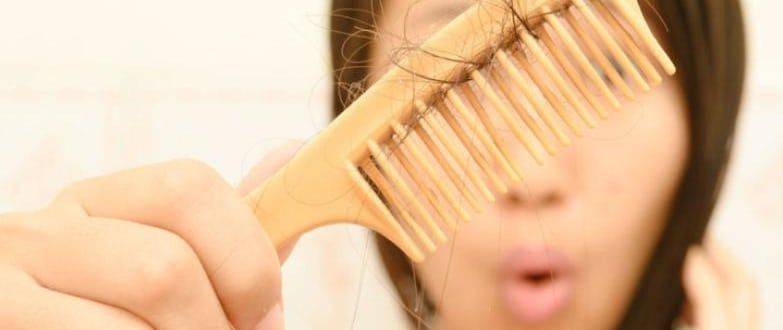
THE hair loss in both men and women it has enormous psychological consequences, which we can all easily perceive.
Dealing with it is a particularly complex issue. At the first level, it would be good to focus on the factors that cause it!
Thyroid problems
The thyroid gland is one of the most important glands in our endocrine system. It is located in our neck just in front of the cartilages of the larynx and consists of two lobes, the left and the right, which are joined together by the isthmus. It produces hormones that control metabolic rate and energy levels. A disorder in thyroid function (hypothyroidism or hyperthyroidism) can lower or increase the metabolic rate too much, as it disrupts the production process of thyroid hormones. According to the British Foundation for Thyroid Diseases, severe, long-term hypothyroidism or hyperthyroidism can be responsible for hair loss. In this case, the weakness and loss of hair is diffuse and does not manifest itself in specific places of the scalp. The restoration of the appearance of the hair is achieved by the successful treatment of the thyroid disorder. However, it will take several months of treatment until the normal hair growth process is restored.
Women with polycystic ovary syndrome (PCOS) have chronic hormonal disruption.
Polycystic ovary syndrome, i.e. the existence of microscopic cysts/lumps in the ovaries, can cause weakening of the hair follicles, thinning of the hair, hair loss and eventually thinning of the hair. Although the cysts are not dangerous, they prevent the production of a key enzyme in the ovaries, thus limiting the production of estrogen. This has the effect of increasing the levels of androgens (hyperandrogenism), and especially testosterone, in the female body.
Androgenetic Alopecia.
The term androgenetic alopecia is used to indicate the influence of genetic background and androgens in this condition, which is at least partly inherited.
It depends on the action of androgens on hairs located in specific places of the scalp. The result is the progressive reduction of the hair cycle, with shrinking of the hair follicle. It represents a normal process in man. The same is true for women, although they may be secondary to a hormonal disorder.
Androgenetic alopecia is a multifactorial condition, where genetic factors determine a specific sensitivity to androgens and possibly some inflammatory effects. Dihydrotestosterone (DHT) is the main androgen that affects hair growth and size.
Increased hair loss is followed by progressive alopecia. Affected hairs become thinner and shorter and are characterized by a reduced duration of the anagen phase and a change in the time to telotosis (apoptosis of the hair). The ratio of terminal to fine hairs decreases with the severity of alopecia to 2:1 or even less in severe cases.
There are different types of hair loss in androgenetic alopecia for men and women. The male type begins with a receding frontotemporal line followed by thinning at the apex. It can start as early as the end of adolescence. Women often experience a more diffuse pattern of hair loss, usually on the top. The female type may be accompanied by signs of hyperandrogenism such as seborrheic acne, hirsutism, infertility, dysmenorrhea.
In these cases the clinical presentation may be similar to that of the male type. In women, chronic telogen hirsutism is a self-limiting periodic hair loss that corresponds to loss without progressive development of alopecia. Drug-related alopecia areata, iron deficiency, and thyroid dysfunction should be ruled out. The treatment of androgenetic alopecia is aimed at hair regrowth and is conservative and/or surgical. It may prove beneficial.
Exhaustive diets. A "blind diet" that results in sudden weight loss is capable of causing hair loss. The main nutritional factors, the loss of which is associated with hair loss are proteins, the vitamins of the B complex (B6, B12 and folic acid), the vitamins A, C and E and the metals copper, zinc and iron.
Tight hairstyles.
It's not a myth! Too tight braids can cause hair loss. The same can happen with the use of relays. Let your hair down and it will grow naturally. Long-term use of such hairstyles can cause permanent hair loss.
Intense stress.
Intense mental and emotional stress can cause sudden hair loss. If you find something like this, consult an expert for help, since your body is reacting to something that gives it… shock!
- Here are 5 good habits to help you… don't promote hair loss!
Use shampoo with a chemically neutral pH, which is beneficial for the hair, and wash it 2-3 times a week, so that the scalp is clean of dirt and sweat, which do not allow it to breathe. - Regarding seasonal hair loss, it is advisable to use special treatments with shampoos, lotions or ampoules that strengthen the hair and enhance its growth.
- Massage also has beneficial effects, because it stimulates microcirculation.
- It is good to avoid decoupage and strong dyes. In their place to prefer highlights, which are not applied to the roots.
- Before you tie your hair into a bun or ponytail, make sure it's well dried. Humidity is bad for the scalp.

No Comments